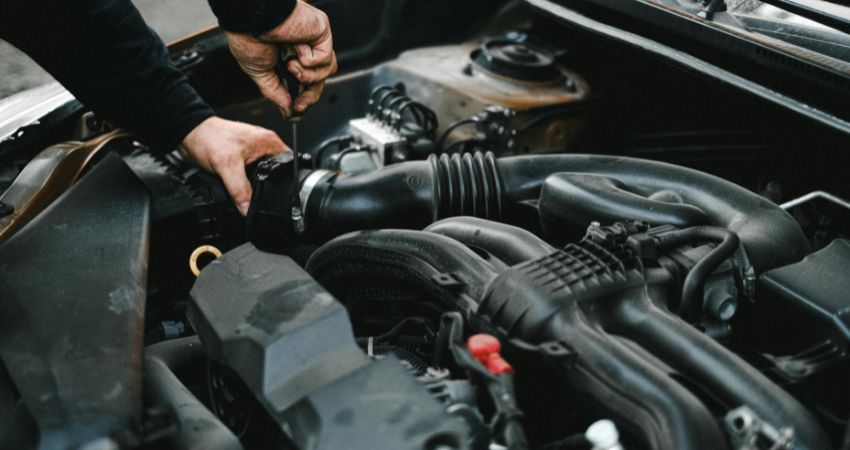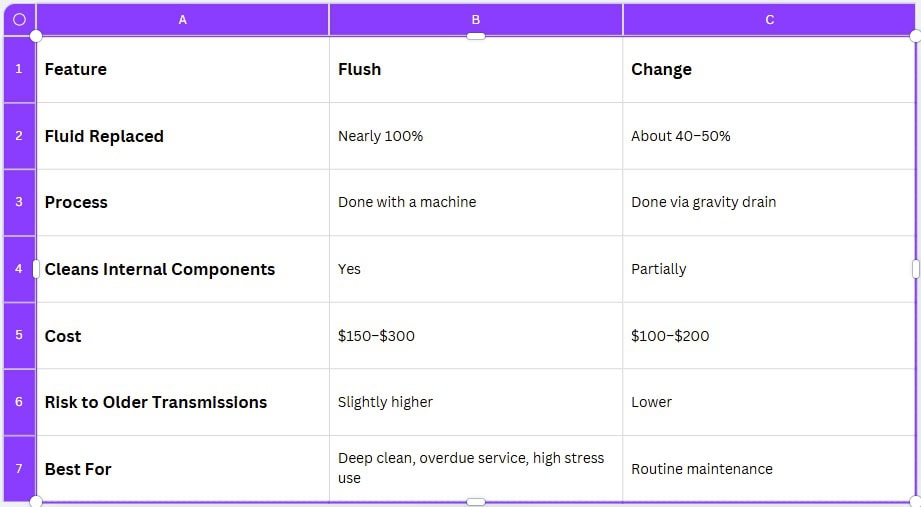If you’ve ever been told your car needs a transmission flush, you might’ve wondered—what exactly is it? Do you really need it? Or is it just an upsell at the shop?
I’ll explain what it is, how it works, and when it makes sense to get one, so you can decide what’s right for your vehicle.
A transmission flush is a service that removes all of the old automatic transmission fluid (ATF) from your system. Unlike a regular fluid change, which only replaces about 40–50% of the fluid, a flush replaces nearly 100% of it.
During the flush, a special machine pushes new ATF through the system while the old fluid is forced out. This also clears out the torque converter and cooler lines, removing built-up grime, metal shavings, and worn-out additives that can cause long-term damage.
Benefits of a Transmission Flush
Here are the benefits of transmission flush…
- Complete fluid replacement
- Cleans internal parts
- Improves shifting performance
- Reduces heat buildup
- Extends transmission life
- It may help resolve minor gear engagement issues
If your vehicle has high mileage and has never had a fluid service, a flush might make a noticeable difference, especially if the fluid is dark, thick, or smells burnt.
Is a Transmission Flush Always Safe?
Here’s where it gets tricky. If your transmission has already started showing signs of wear—like slipping or delayed shifting—and the fluid is very dirty, a flush can sometimes do more harm than good. It may dislodge debris that’s temporarily helping your old system function.
In those cases, it might be safer to start with a fluid change instead. This gradually introduces new fluid and helps your transmission adjust slowly.
You should get a flush if….
- Your vehicle has over 60,000 miles and hasn’t had a fluid service
- ATF is dark brown or black, or smells burnt
- You experience rough or jerky shifting
- The manufacturer recommends it (check your manual or consult a certified mechanic)
- Your vehicle is used for towing, commercial driving, or frequent stop-and-go traffic
How Much Does It Cost?
Expect to pay $150 to $300, depending on your vehicle, location, and transmission type. It’s a bit more than a fluid change, but it cleans more thoroughly and may help extend your transmission’s lifespan.
What Fluid Should You Use?
Always use the ATF that matches your vehicle’s specs—check your owner’s manual for the recommended type (such as Dexron VI, Mercon LV, or CVT-specific fluids).
Personally, I’ve had the best long-term performance with Amsoil Synthetic Multi-Vehicle ATF. It handles heat, resists wear, and flows smoothly across extreme temperatures. Whether I’m driving in city traffic or hauling loads on summer roads, it delivers.

